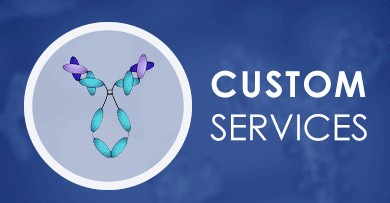 Loading...
Loading...

MSH2
 Loading...
Loading...Anti-MSH2 Products
-
- Species Reactivity: Human
- Type: Mouse IgG1
- Application: IHC-Fr, IHC-P, WB, IP, IF
-
- Derivation: Mouse
- Species Reactivity: Human
- Type: Mouse IgG2b
- Application: WB
-
- Type: Mouse IgG1
- Application: ELISA, WB, ICC, FC
-
- Derivation: Mouse
- Species Reactivity: Human
- Type: Mouse IgG2b, κ
- Application: ELISA, WB, IHC
-
- Species Reactivity: Human, Monkey
- Type: Mouse IgG
- Application: WB, IHC, IF, ELISA
-
- Species Reactivity: Human
- Type: Mouse IgG
- Application: WB
-
- Type: Mouse IgG1
- Application: ELISA, ICC, WB, FC, IHC
-
- Type: Mouse IgG2a
- Application: ELISA, WB, IHC, FC
- Recombinant Mouse Anti-MSH2 Monoclonal Antibody (10G1) (MRO-1026-CN)
-
- Species Reactivity: Human, Rat
- Type: Mouse IgG2b
- Application: WB, IHC
- Recombinant Mouse Anti-MSH2 Monoclonal Antibody (10G2) (MRO-1027-CN)
-
- Species Reactivity: Human, Rat
- Type: Mouse IgG2b
- Application: WB, IHC
- Rabbit Anti-MSH2 Polyclonal Antibody (MRO-2044-CN) (MRO-2044-CN)
-
- Species Reactivity: Human, Mouse, Rat
- Type: Rabbit IgG
- Application: IF, FC
- AbPlus™ Anti-MSH2 Magnetic Beads (VS-0724-YC845) (VS-0724-YC845)
-
- Target: MSH2
- Target Species: Human
- Application: IP, Protein Purification
-
- Species Reactivity: human
- Type: Rabbit IgG
- Application: IHC-P
-
- Type: Mouse IgG1
- Application: ELISA, ICC, FC
-
- Derivation: Mouse
- Species Reactivity: Human
- Type: Mouse IgG1
- Application: WB
-
- Derivation: Mouse
- Species Reactivity: Human
- Type: Mouse IgG1, κ
- Application: WB, IP, IF, ELISA
-
- Species Reactivity: Human
- Type: Mouse antibody
- Application: IHC-Fr, WB
- Mouse Anti-MSH2 Recombinant Antibody (VS3-CJ961) (VS3-CJ961)
-
- Species Reactivity: Human
- Type: Mouse IgG
- Application: WB, IHC
-
- Species Reactivity: Human, Rat
- Type: Rabbit IgG
- Application: WB
- Recombinant Mouse Anti-MSH2 Monoclonal Antibody (10G3) (MRO-1028-CN)
-
- Species Reactivity: Human, Mouse, Rat
- Type: Mouse IgG2b
- Application: WB, IHC
- Mouse Anti-MSH2 Monoclonal Antibody (VS7-0425-WR419) (VS7-0425-WR419)
-
- Species Reactivity: Human, Monkey
- Type: Mouse IgG
- Application: WB, IHC-P, IF, ICC, ELISA
- Anti-Rat MSH2 Immunohistochemistry Kit (VS-0525-XY4518)
-
- Species Reactivity: Human, Mouse, Rat
- Target: MSH2
- Application: IHC
- Anti-Canine MSH2 Immunohistochemistry Kit (VS-0525-XY4519)
-
- Species Reactivity: Human, Canine
- Target: MSH2
- Application: IHC
-
- Antibody Host: Mouse
- Antibody Reactivity: Human
-
- Derivation: Phage display library screening
- Species Reactivity: Human
- Type: IgG
- Application: FC, ICC, IF, IHC-P, WB
- Anti-MSH2 Immunohistochemistry Kit (VS-0325-XY1375)
-
- Species Reactivity: Human, Mouse
- Target: MSH2
- Application: IHC
- Mouse Anti-MSH2 Recombinant Antibody (clone 4F10D6) (VS7-0425-WR417)
-
- Species Reactivity: Human
- Type: Mouse IgG2b
- Application: FC
- Mouse Anti-MSH2 Monoclonal Antibody (clone 1B3A8A8) (VS7-0425-WR418)
-
- Species Reactivity: Human, Monkey
- Type: Mouse IgG1
- Application: WB, IHC, ICC
- Anti-Human MSH2 Immunohistochemistry Kit (VS-0525-XY4517)
-
- Species Reactivity: Human, Monkey, Monkey
- Target: MSH2
- Application: IHC
- Anti-Mouse MSH2 Immunohistochemistry Kit (VS-0525-XY4516)
-
- Species Reactivity: Human, Mouse, Rat
- Target: MSH2
- Application: IHC
Can't find the products you're looking for? Try to filter in the left sidebar.Filter By Tag
Our customer service representatives are available 24 hours a day, from Monday to Sunday. Contact Us
For Research Use Only. Not For Clinical Use.
Background
Cancer-related genes, Disease related genes, Human disease related genes, Plasma proteins
Intracellular
Low cell type specificity
Low immune cell specificity
Low cell line specificity
Component of the DNA mismatch repair (MMR) complex composed at least of MSH2, MSH3, MSH6, PMS1 and MLH1 (PubMed:26300262). Heterodimer consisting of MSH2-MSH6 (MutS alpha) or MSH2-MSH3 (MutS beta) (PubMed:8942985). Both heterodimers form a ternary complex with MutL alpha (MLH1-PMS1) (PubMed:9788596, PubMed:10856833, PubMed:11427529, PubMed:11429708, PubMed:12414623, PubMed:14676842). Interacts with MCM9; the interaction recruits MCM9 to chromatin (PubMed:26300262). Interacts with MCM8 (PubMed:26300262). Interacts with EXO1 (PubMed:9788596, PubMed:10856833, PubMed:11427529, PubMed:11429708, PubMed:12414623, PubMed:14676842). Part of the BRCA1-associated genome surveillance complex (BASC), which contains BRCA1, MSH2, MSH6, MLH1, ATM, BLM, PMS2 and the RAD50-MRE11-NBS1 protein complex (PubMed:10783165). This association could be a dynamic process changing throughout the cell cycle and within subnuclear domains (PubMed:10783165). Interacts with ATR (PubMed:14657349). Interacts with SLX4/BTBD12; this interaction is direct and links MutS beta to SLX4, a subunit of different structure-specific endonucleases (PubMed:19596235). Interacts with SMARCAD1 (PubMed:18675275).
DNA-binding



